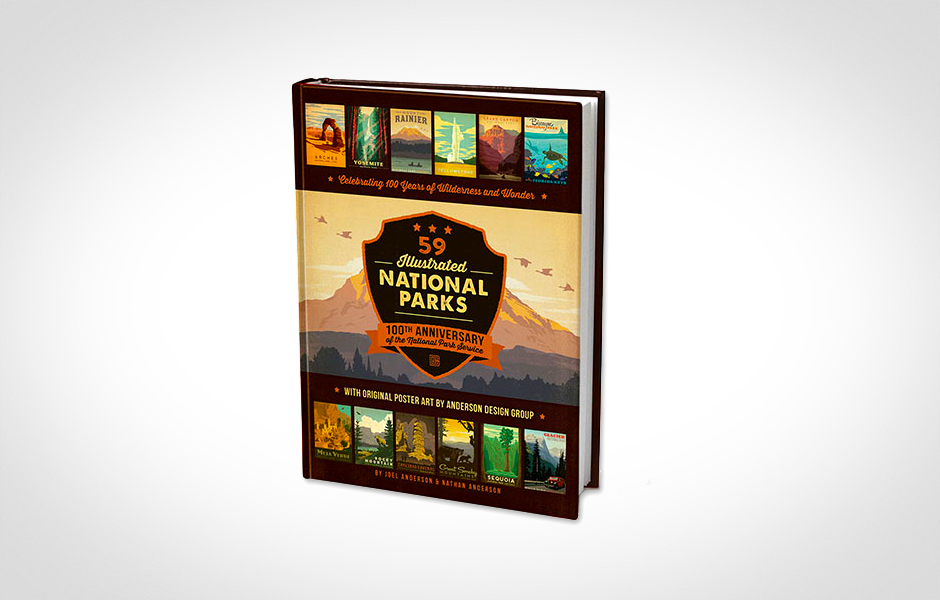Man isn’t meant to stay indoors — our weekly “Trekking” column can attest to that. It’s a column dedicated to the adventurer inside of all of us, the one pining to ditch the office humdrum for a quick surf session or seven-week jaunt in the Grand Tetons. One day we may highlight an ultra-light stove and the next a set of handmade canoe paddles. Life doesn’t just happen inside the workplace, so get outside and live it.
A 100-year anniversary is cause for celebration, or at least it should be. President Woodrow Wilson signed the National Park Service into effect on August 25, 1916, thus establishing a newly-minted federal bureau and wide-spread preservation aimed at managing what would soon become our nation’s 58 national parks. Anderson Design Group’s Illustrated National Parks ($50) is a beautiful testament to those beginnings, one graciously peppered with history and artwork in equal measure.

Check out the book online for more information, or to browse the Nashville-based design firm’s excellent collection of postcards, posters, and related memorabilia.









